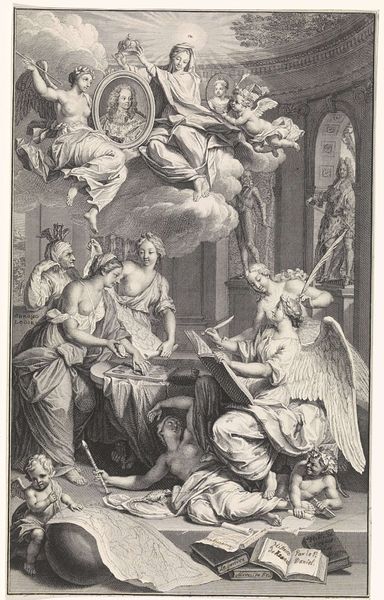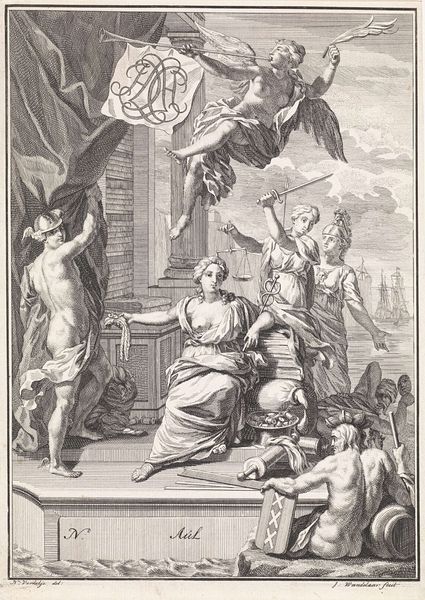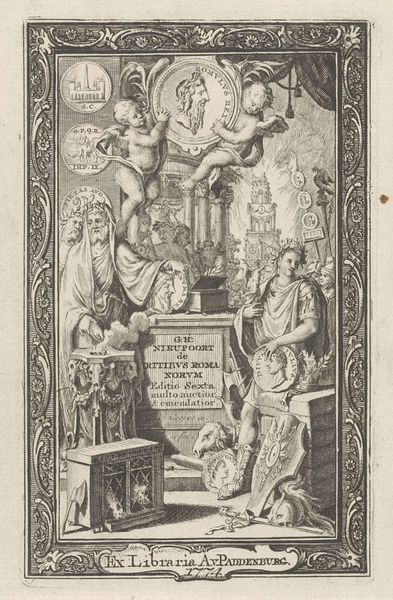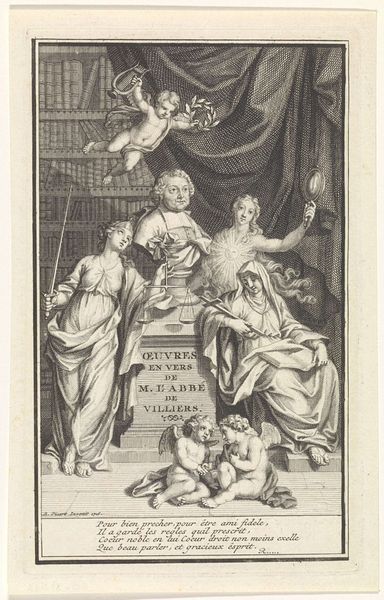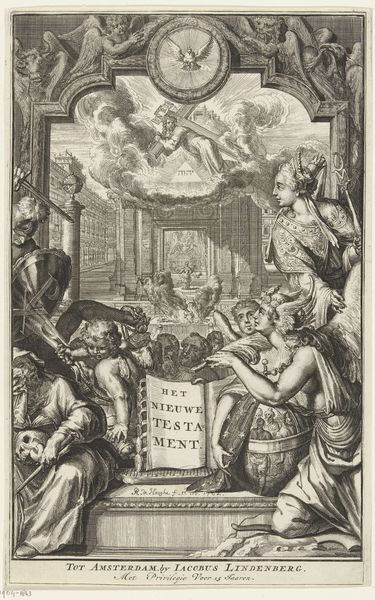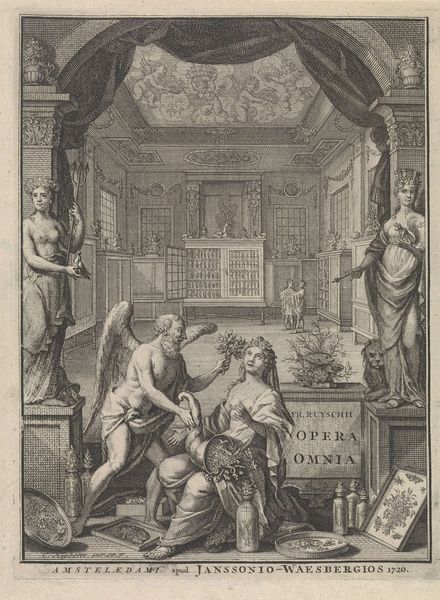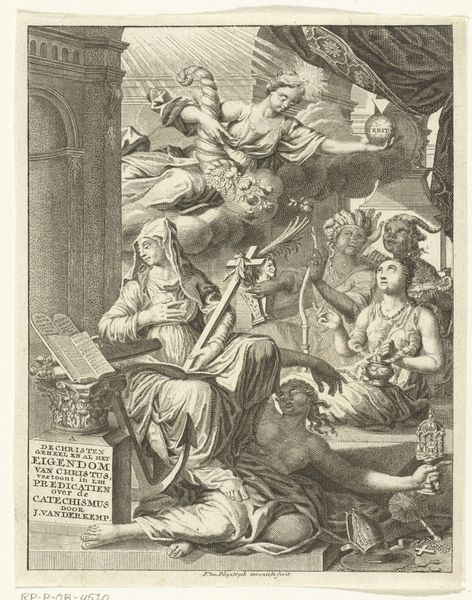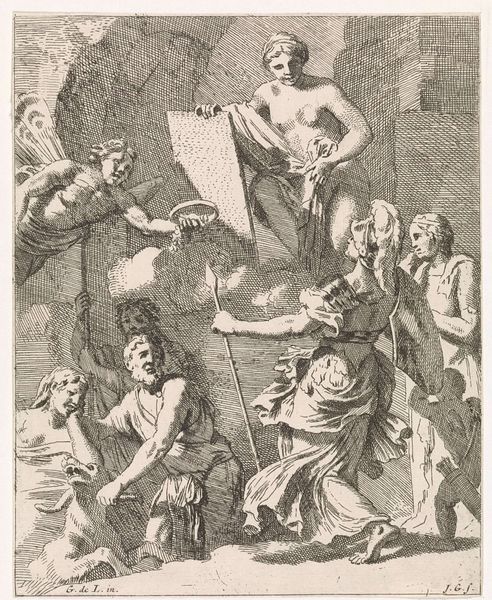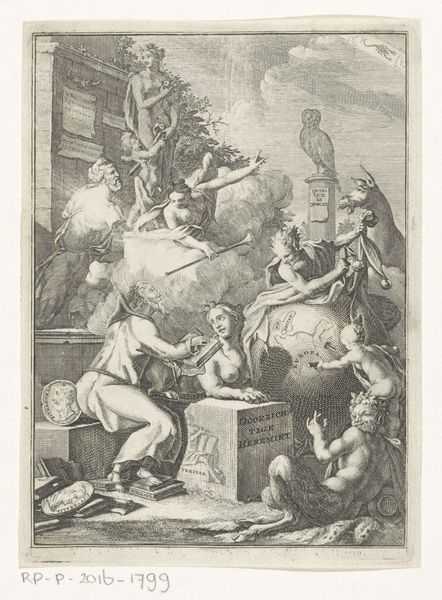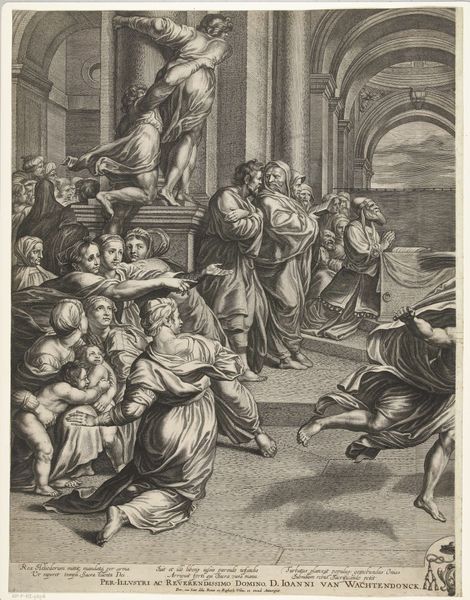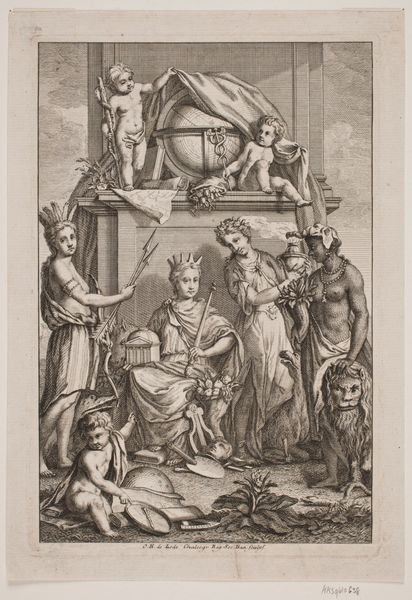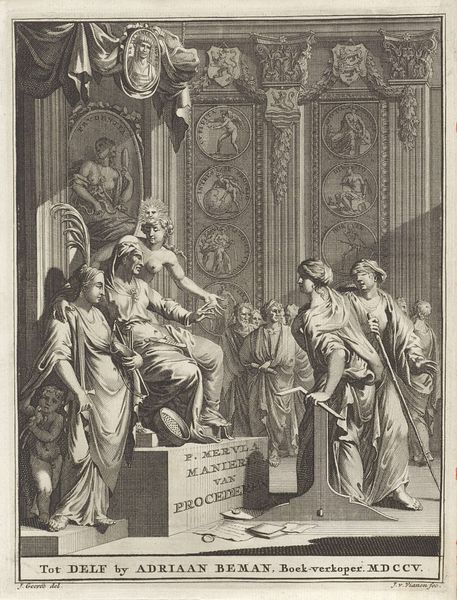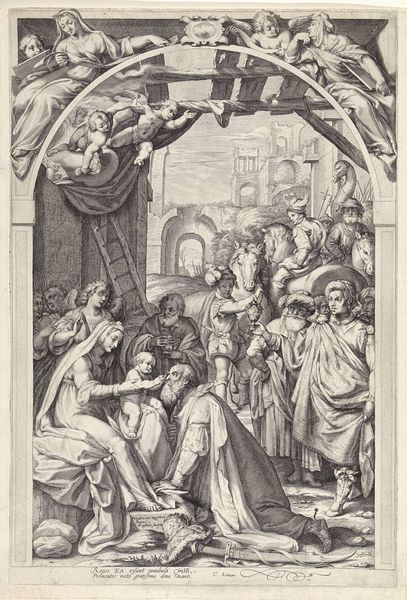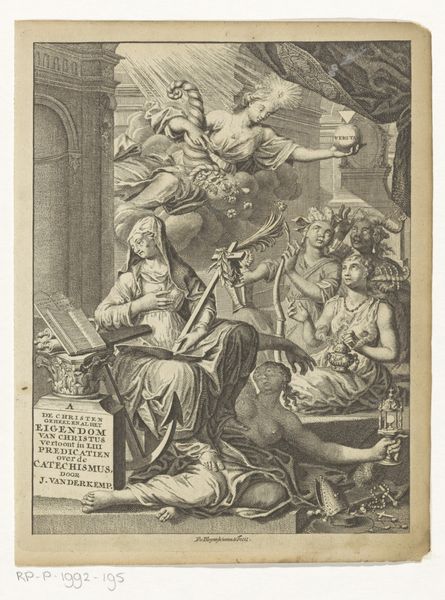
Titelpagina voor A. Bogaert, De roomsche monarchy, vertoont in de muntbeelden der westersche en oostersche keizeren, Utrecht 1697 1697
0:00
0:00
print, engraving
#
allegory
#
baroque
# print
#
old engraving style
#
caricature
#
history-painting
#
engraving
Dimensions: height 202 mm, width 166 mm
Copyright: Rijks Museum: Open Domain
Editor: So, here we have Jacobus Baptist’s title page engraving for A. Bogaert’s "De roomsche monarchy," printed in 1697. The baroque style is quite ornate, and the allegorical figures create an almost theatrical atmosphere. How do you interpret this work, particularly considering its historical context? Curator: I see this print as a product of its time, deeply embedded in the religious and political struggles of the late 17th century. The very act of creating and distributing such images highlights the emerging power of print as a tool for shaping public opinion and the circulation of ideas. What material processes were involved in its making, and how did they impact its availability and reach? Editor: Well, being an engraving, it involves skilled labor, precise tools, and multiple stages. It also suggests a significant investment by the publisher, Willem van de Water, pointing to a demand for this type of content. Curator: Exactly. And think about the materiality of the print itself – the paper, the ink, the press. Each element contributed to the final product and its potential to influence its audience. Also, who was Bogaert and how did he depend on his relationship with his book seller to convey meaning? Editor: That's a fascinating angle. We often focus on the image itself, forgetting the material and social conditions that enabled its creation and dissemination. I guess it challenges the traditional emphasis on the artwork as solely an expression of the artist's genius. Curator: Precisely. It shifts the focus to the network of production, distribution, and consumption that shaped the meaning and impact of the work. And that allows a critical challenge against typical art narratives. Editor: Thanks, I hadn't considered those material elements. This opens up new possibilities of how I consider works of art.
Comments
No comments
Be the first to comment and join the conversation on the ultimate creative platform.
